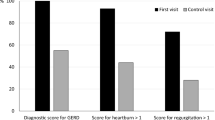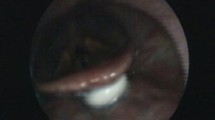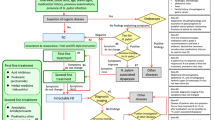Abstract
The 3-ounce water swallow test is frequently used to screen individuals for aspiration risk. Prior research concerning its clinical usefulness, however, is confounded by inadequate statistical power due to small sample sizes and varying methodologies. Importantly, research has been limited to a few select patient populations, thereby limiting the widespread generalizability and applicability of the 3-ounce test. The purpose of this study was to investigate the clinical utility of the 3-ounce water swallow test for determining aspiration status and oral feeding recommendations in a large and heterogeneous patient population. Fiberoptic endoscopic evaluation of swallowing (FEES) was performed in conjunction with the 3-ounce water swallow test on 3000 participants with a wide range of ages and diagnoses. A total of 1151 (38.4%) passed and 1849 (61.6%) failed the 3-ounce water swallow test. Sensitivity of the 3-ounce water swallow test for predicting aspiration status during FEES = 96.5%, specificity = 48.7%, and false positive rate = 51.3%. Sensitivity for identifying individuals who were deemed safe for oral intake based on FEES results = 96.4%, specificity = 46.4%, and false positive rate = 53.6%. Passing the 3-ounce water swallow test appears to be a good predictor of ability to tolerate thin liquids. However, failure often does not indicate inability to tolerate thin liquids, i.e., low specificity and high false-positive rate. Use of the 3-ounce water swallow test alone to make decisions regarding safety of liquid intake results in over-referral and unnecessary restriction of liquid intake for nearly 50% of patients tested. In addition, because 71% of participants who failed the 3-ounce water swallow test were deemed safe for an oral diet, nonsuccess on the 3-ounce water swallow test is not indicative of swallowing failure. The clinical utility of the 3-ounce water swallow test has been extended to include a wide range of medical and surgical diagnostic categories. Importantly, for the first time it has been shown that if the 3-ounce water swallow test is passed, diet recommendations can be made without further objective dysphagia testing.

Similar content being viewed by others
References
Holas MA, DePippo KL, Reding MJ. Aspiration and relative risk of medical complications following stroke. Arch Neurol 1994;51:1051–1053.
Martin BJ, Corlew MM, Wood H, Olson D, Golopol LA, Wingo M, Kirmani N. The association of swallowing dysfunction and aspiration pneumonia. Dysphagia 1994;9:1–6.
Schmidt J, Holas M, Halvorson K, Reding M. Videofluoroscopic evidence of aspiration predicts pneumonia and death but not dehydration following stroke. Dysphagia 1994;9:7–11.
Langmore SE, Terpenning MS, Schork A, Chen Y, Murray JT, Lopatin D, Loesche WJ. Predictors of aspiration pneumonia: How important is dysphagia? Dysphagia 1998;13:69–81.
Fletcher RH, Fletcher SW, Wagner EH. Clinical Epidemiology: The Essentials. Baltimore: Williams & Wilkins, 1988.
Leder SB, Espinosa JF. Aspiration risk after acute stroke: Comparison of clinical examination and fiberoptic endoscopic evaluation of swallowing. Dysphagia 2002;17:214–219.
The Joint Commission, Primary stroke centers: Stroke performance measurement implementation guide, 2006, pp 4–34. Available at http://www.jointcommission.org. Accessed 1 June 2007.
Chong MS, Lieu PK, Sitoh YY, Meng YY, Leow LP. Bedside clinical methods useful as screening test for aspiration in elderly patients with recent and previous strokes. Ann Acad Med Singapore 2003;32:790–794.
DePippo KL, Holas MA, Reding MJ. The Burke dysphagia screening test: Validation of its use in patients with stroke. Arch Phys Med Rehabil 1994;75:1284–1286.
DePippo KL, Holas MA, Reding MJ. Validation of the 3-oz water swallow test for aspiration following stroke. Arch Neurol 1992;49:1259–1261.
Garon BR, Engle M, Ormiston C. Reliability of the 3-oz water swallow test utilizing cough reflex as sole indicator of aspiration. Neurorehabil Neuro Repair 1995;9:139–143.
Gottlieb D, Kipnis M, Sister E, Vardi Y, Brill S. Validation of the 50 ml3 drinking test for evaluation of post-stroke dysphagia. Disabil Rehabil 1996;18:529–532.
Hind NP, Wiles CM. Assessment of swallowing and referral to speech and language therapists in acute stroke. QJM 1998;91:829–835.
Lim SH, Lieu PK, Phua SY, Seshadri R, Venketasubramanian N, Lee SH, Choo PW. Accuracy of bedside clinical methods compared with fiberoptic endoscopic examination of swallowing (FEES) in determining the risk of aspiration in acute stroke patients. Dysphagia 2001;16:1–6.
Mari F, Matei M, Ceravolo MG, Pisani A, Montesi A, Provinciali L. Predictive value of clinical indices in detecting aspiration in patients with neurological disorders. J Neurol Neurosurg Psychiatry 1997;63:456–460.
McCullough GH, Rosenbek JC, Wertz RT, McCoy S, Mann G, McCullough K. Utility of clinical swallowing examination measures for detecting aspiration post-stroke. J Speech Lang Hear Res 2005;48:1280–1293.
McCullough GH, Wertz RT, Rosenbek JC. Sensitivity and specificity of clinical/bedside examination signs for detecting aspiration in adults subsequent to stroke. J Commun Disord 2001;34:55–72.
McCullough GH, Wertz RT, Rosenbek JC, Mills RH. Inter- and intrajudge reliability of a clinical examination of swallowing in adults. Dysphagia 2000;15:58–67.
Miyazaki Y, Arakawa M, Kizu J. Introduction of simple swallowing ability test for prevention of aspiration pneumonia in the elderly and investigation of factors of swallowing disorders. Yakugaku Zasshi 2002;122:97–105.
Nishiwaki K, Tsuji T, Liu M, Hase K, Tanaka N, Fujiwara T. Identification of a simple screening tool for dysphagia in patients with stroke using factor analysis of multiple dysphagia variables. J Rehabil Med 2005;37:247–251.
Rosenbek JC, McCullough GH, Wertz RT. Is the information about a test important? Applying the methods of evidence-based medicine to the clinical examination of swallowing. J Commun Disord 2004;37:437–450.
Teramoto S, Fukuchi Y. Detection of aspiration and swallowing disorder in older stroke patients: Simple swallowing provocation test versus water swallowing test. Arch Phys Med Rehabil 2000;81:1517–1519.
Tohara H, Saitoh E, Mays KA, Kuhlmeier K, Palmer JB. Three tests for predicting aspiration without videofluorography. Dysphagia 2003;18:126–134.
Wu MC, Chang YC, Wang TG, Lin LC. Evaluating swallowing dysfunction using a 100-ml water swallowing test. Dysphagia 2004;19:43–47.
Daniels SK, McAdam CP, Brailey K, Foundas AL. Clinical assessment of swallowing and prediction of dysphagia severity. Am J Speech Lang Pathol 1997;6:17–24.
Langmore SE, Schatz K, Olsen N. Fiberoptic endoscopic examination of swallowing safety: A new procedure. Dysphagia 1988;2:216–219.
Langmore SE, Schatz K, Olsen N. Endoscopic and videofluoroscopic evaluations of swallowing and aspiration. Ann Otol Rhinol Laryngol 1991;100:678–681.
Leder SB, Ross DA, Briskin KB, Sasaki CT. A prospective, double-blind, randomized study on the use of topical anesthetic, vasoconstrictor, and placebo during transnasal flexible fiberoptic endoscopy. J Speech Lang Hear Res 1997;40:1352–1357.
Leder SB, Acton LM, Lisitano HL, Murray JT. Fiberoptic endoscopic evaluation of swallowing with and without blue-dyed food. Dysphagia 2005;20:157–162.
Logemann JA. Evaluation and treatment of swallowing disorders, 2nd ed. Austin, TX: Pro-Ed, 1998.
Leder SB, Sasaki CT, Burrell MI. Fiberoptic endoscopic evaluation of dysphagia to identify silent aspiration. Dysphagia 1998;13:19–21.
Fleiss JL. Statistical Methods for Rates and Proportions, 2nd ed. New York: John Wiley & Sons, 1981.
Author information
Authors and Affiliations
Corresponding author
Additional information
Work was performed at Yale University of Medicine and The University of Memphis.
Rights and permissions
About this article
Cite this article
Suiter, D.M., Leder, S.B. Clinical Utility of the 3-ounce Water Swallow Test. Dysphagia 23, 244–250 (2008). https://doi.org/10.1007/s00455-007-9127-y
Received:
Accepted:
Published:
Issue Date:
DOI: https://doi.org/10.1007/s00455-007-9127-y




